Round the World – Australia 2, Part 8
I had spent much longer in Western Australia than expected, and seen rather less than I had hoped. Today I would be leaving at last and entering the Northern Territory. I had filled in the required paperwork and received my travel approval a few days earlier, so I was good to go. This was a good thing given the lack of internet access in this part of the world!
It was still before 7am, and reception was not yet open. I left my loaner vehicle in the airplane parking area and took off, turning east and heading inland away from the coast. I wouldn’t see the sea again for many miles. I flew past Horizontal Falls again, then up the Walcott Inlet, and along the Charnley River into the outback.
It was a bit more than an hour’s flight to my first stop at Mt Elizabeth Station. This was named after the mother of colonial explorer and prospector Frank Hann who visited the area in 1898. Pioneer Frank Lacy drove a herd of cattle across the Kimberley and established the station in 1945, and the Lacy family operated it until recently. The station supports about 6,000 head of cattle and also offers tourist accommodation for people to visit and explore the rivers, gorges, waterfalls, and sacred aboriginal sites including rock art that the station’s boundaries encompass. The station was closed for the season but the caretakers had confirmed that I was welcome to drop in and look around.
I circled the dirt strip, which was huge and well kept; the caretaker apparently drags it on a regular basis to keep the ant hills down. As I lined up on final approach I could see a truck approaching from the station to greet me. Shortly after landing another truck appeared from the direction of the nearby aboriginal settlement. It turned out that they thought I was the mail plane! Unfortunately the mail plane had not been able to get through today due to poor weather at its origin, so the gentleman from the village went away empty handed.
I rode with the caretaker back to the homestead building where I was greeted by his wife and dog. We enjoyed a cup of tea and some biscuits while chatting about life out on such a remote station. Simple tasks, like getting groceries, involve many hours of driving and careful watching of the weather to ensure that the dirt roads would not be washed out. Keeping an airplane on the station sounded like a better plan to me! After refreshments they took me back to Planey and I was on my way again.
I performed a quick touch and go at the Gibb airfield a few miles to the east before climbing higher and setting course for Kununurra. This was to be my final stop in Western Australia, and was an opportunity to refuel before striking out across the Northern Territory. I circled the airfield at El Questro Station, where I had hoped to stop. I’d been unable to make contact until now, but managed to speak to them while circling overhead, and they confirmed that the station was closed to all arrivals. I continued on my way.

Nearby to the east is Emma Gorge, another tourist stop with its own airfield which was currently closed down. This was a shame, as it is a renowned destination with a beautiful 65m waterfall cascading off the cliffs into a clear pool at the bottom, which is ideal for swimming. Instead of stopping, I continued on towards my final stop in Western Australia, the airport of Kununurra.
The vast scale of Western Australia is really made clear when you realise that Kununurra is more than 3,000km (almost 2000 miles) from Perth, and that is not even the full length of the state. The population of Kununurra varied between 5,000 and 10,000 depending on the season, and the number of itinerant workers and tourists in town. The local climate is lush and tropical, and the agriculture in the area leans heavily towards melons, mangoes and Indian sandalwood. One of the local attractions is a “Celebrity Tree Park”, consisting of trees planted by personalities such as Baz Luhrmann and, rather unfortunately now, Rolf Harris. I refueled, and headed onwards, into the Northern Territory.
I crossed the border bound for Kidman Springs, also known by the name of Victoria River Research Station. This location operates as a semi-arid tropical rangeland and cattle production research site. Established in 1966, the station is managed as a breeding operation, with approximately 700 breeder cattle.
I had called ahead, and so one of the staff members was there in his pickup truck to greet me on arrival. I rode in the bed back up to the main office where I was offered a cup of tea and a biscuit, and given a run through the setup of the research station and the projects which they were working on. The station is huge by any standards other than Australia’s, covering an area of 314 square km.
The facility is run by just 3 or 4 workers. Recent research has centred on genetic improvements for greater productivity and market suitability while maintaining traits for hardy animals that suit tropical semi-arid production. One of the ongoing studies was around optimal phosphorous levels for cattle well-being and growth. It seemed like pretty tough work, running the studies and maintaining the station so far from the rest of civilization!
I departed from the smooth dirt runway for my final flight of the day. This would take just over an hour, from Kidman Springs to the tiny hamlet of Daly Waters. The flight was smooth, and the desert fairly featureless. Daly Waters appeared out of the haze ahead like a little oasis. I had been trying throughout the day to get through to the only business in town, the hotel, to ask about a pick-up from the airport. They hadn’t answered, so I circled the buildings a couple of times to try and get their attention before lining up for landing. I parked up near the large abandoned hangar, and secured the plane.
Daly Waters has quite a long aviation history. It was a centre for the London to Sydney air race of 1926, a refueling stop for early Qantas flights to Singapore, a World War II Airforce base, including a field hospital, and has also played a role as an operational base for joint military maneuvers. In more recent years, however, it has become a slightly crumbling runway in the desert with no commercial service or facilities.
I still couldn’t get through to the hotel, so I set off on the 20 minute walk through the afternoon heat. It was actually quite fun to walk into this peculiar desert town along the highway. The buildings along the road were all rather uniquely decorated. One notable highlight was a real live crocodile in somebody’s front garden, not what I had expected to see out here in the desert. I checked in to the hotel, being given a little cabin across the road, and went to walk around a little.
The population of Daly Waters was listed as 9 in the 2016 census, and I imagine they all work at the hotel. A few other buildings are scattered around though, one of which is a rather eccentric “museum” with a little donation box at the door for entry fees. It boast “things from the Second World War, cars from movies, and a giant crocodile” and this description was fairly accurate.
That evening I ate in the pub attached to the hotel; it’s not like I had a choice! The food was good though, and the interior design unique.
After dinner I briefly browsed the souvenir shop, contemplating purchase of a shirt. Branded with the state’s tourist logo, “CU” (See you) in the “NT” (Northern Territory), I came to the conclusion that the rest of the world was probably not ready for this bold statement, and I may not be universally welcomed when wearing Northern Territory gear.
The morning dawned clear and bright, much like every day so far in this part of the world. After checking out and returning my key in the bar I walked back out to the Daly Waters airport and pre-flighted before taking off and continuing my path eastwards, back towards the ocean.
My first flight took me across the desert, almost to the very eastern edge of the Northern Territory. My destination was Borroloola, a town about 50km (30 miles) from the coast and the Gulf of Carpentaria. The locale was declared as a town in 1885, and today boasts a population of a little less than 900, more than three quarters of whom are Aboriginal Australians. The little airport is equipped with a self serve fuel pump, and is also helpfully located close to a service station and a general store which gave me the opportunity to pick up some snacks for the journey. As I returned to the airplane I exchanged greetings with a family who were picnicking under a tree in the park next to the airport. The temperature was fast approaching the 40s, not my idea of good picnicking weather, but I suppose in this part of the world you must get used to it!
On departure from Borroloola I made a short detour north to the dirt strip at King Ash Bay, a popular fishing spot. After performing a touch and go I turned southeast and climbed to cruising altitude on my way into Queensland. Convective clouds with associated rain showers were already building in the region, powered by the hot moist air so common at the beginning of the rainy season.

The flight of a little more than an hour took me back away from the coast and into the desert to the dirt airstrip at Adels Grove. The property was originally gazetted in 1904 as a mining lease, and then in 1920 passed into the ownership of Albert de Lestang as an experimental botanical garden. Albert planted many species of trees and shrubs and supplied the Botanical Gardens of the world with the seeds produced by his nursery, and the Botanical Gardens in Brisbane still has 536 different samples of seeds sent to them by Albert held in their collection.
In the early 1950s a fire swept through the grove while Albert was absent, destroying everything including his dwelling and trunk containing all of his research papers. By this time Albert de Lestang was in his early seventies and having lost his building complex, all of his written records of plants and their hybrids, his stores and a large percentage of the planted Grove he succumbed shortly thereafter to great depression and broken spirit. Albert’s last years were spent in a Charters Towers nursing home, where he died in 1959 at the age of 75.
Like most of the places in the north, the facilities were mostly shut down due to a combination of COVID-19 and the beginning of the wet season. No accommodation was available, but I had decided to drop in anyway and have a look at the creek and airstrip. As well as a bar, restaurant and camp site, during the tourist season Adels Grove offers canoe hire, bush treks, boat and 4×4 tours, and fishing. I made a note to come back in future when things were open!
The shop was quiet, with shutters pulled down, but a knock on the door was soon answered by a friendly staff member who sold me an ice cream and pointed me in the direction of the creek. I sat in the shade on the bank and ate, while idly pondering whether there might be any crocodiles lurking beneath my feet. This was an unproductive line of thought which soon had me on my way back to the airplane for the final flight of the day, lest I be eaten by a river-dweller.
After departure I turned back to the north, almost retracting my steps along the path I’d flown earlier in the day. The scenery remained the same, parched vegetation hanging on in the scorching desert. I circled briefly over Kingfisher camp, a station airstrip which is available for fly-in camping when conditions suit, before touching the wheels and carrying on my way north towards my night stop.
This night stop was to be Hell’s Gate roadhouse. This roadhouse is located on highway 1 which at this time of year, in this part of the country, was receiving remarkably little traffic. One feature of the property which really attracted me was the fact that the airstrip is located right across the road from the buildings and one can taxi the aircraft across the highway and park up at the roadhouse itself.
The roadhouse was opened in April of 1986 by two priests and a nun, and was designed to assist with the struggling finances of the Cliffdale station on which it sits. The name of the roadhouse, ‘Hell’s Gate’ comes from the name of the small gap in the escarpment through which the road passes, one kilometre to the south. The name of the gap originated in the early days of settlement of the Gulf, when the police contingent (then based at ‘Corinda’, on the Nicholson River) would escort settlers and travelers to the ‘portals of Hell’s Gate’. From that point onwards, they were ‘on their own’ until they reached the safety of police protection at Katherine, in the Northern Territory.
In those days travelers were on foot, or at the best mounted on horses. There were no 4WD’s or two-way radios, and the lands were largely unexplored and considered very dangerous; it would well have seemed the gateway to hell. Where the road passes through Hell’s Gate, is the same track that the legendary explorer, overlander and bushman Nat Buchanan travelled as he guided the first settlers to ‘take up’ and settle the first two ‘cattle runs’ in the Northern Territory back in 1881.
The roadhouse was easily spotted given the large rocky escarpment nearby and after circling the site for a runway inspection I touched down facing east and taxied over the road to park up outside the accommodation.
I’d arrived reasonably early, so I spent a while relaxing and cooling down before taking some time to organise the aircraft and tidy things up a bit. While I was doing this a couple of small helicopters arrived and tied down. I spoke to the pilots and found that they were out this way to muster cattle on the station; with the vast distances out here, dogs just don’t cut it for bringing in the livestock! That evening I ate at the roadhouse, chatting to the owner; he owned the C182 that was tied down under cover by the runway and kept me and the other pilots entertained with stories of life in the outback.
Click here to read the next part of the story.
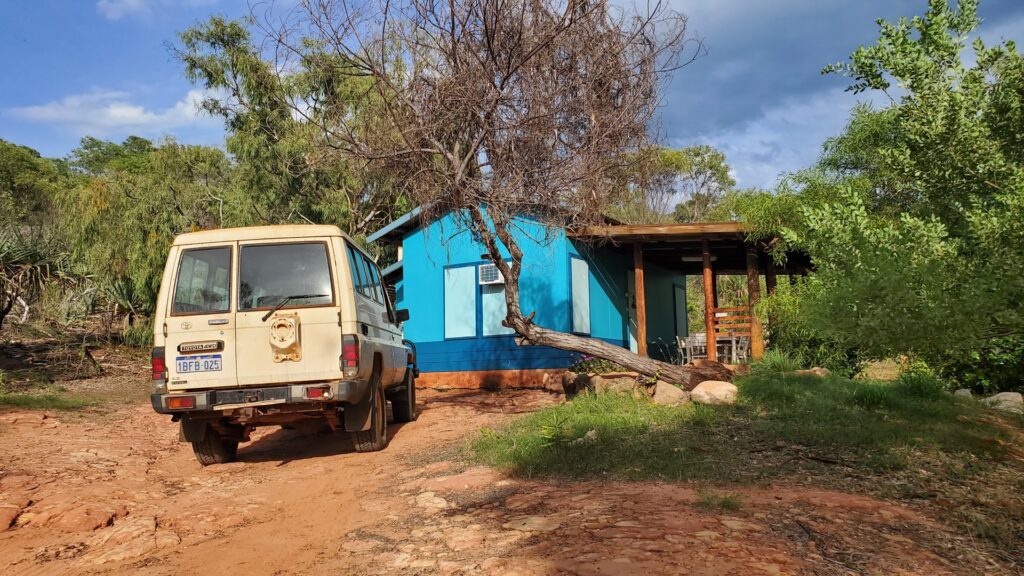
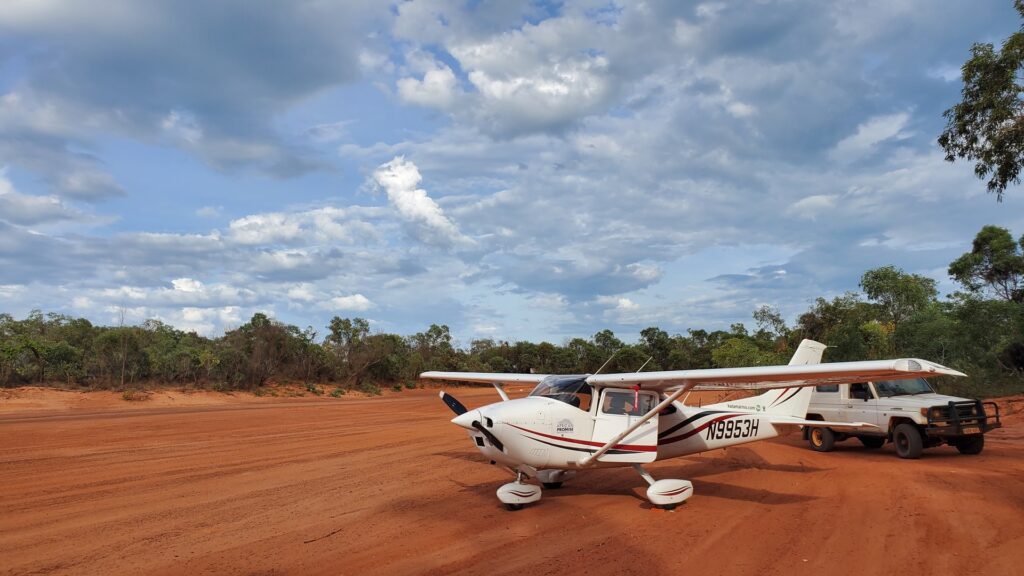
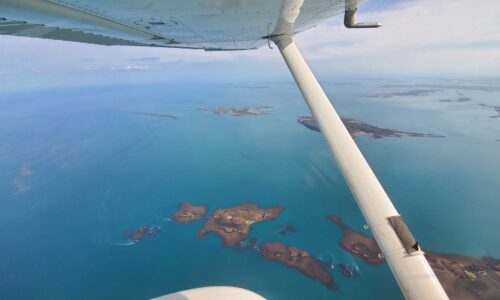
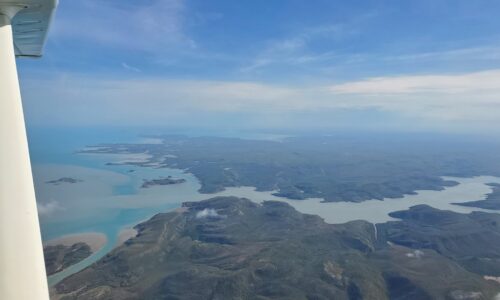
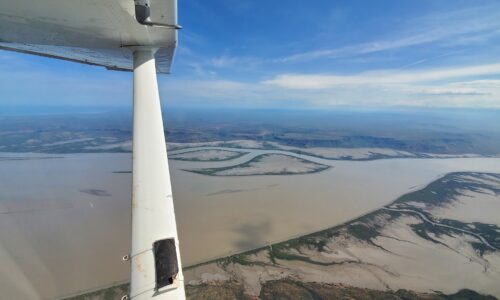
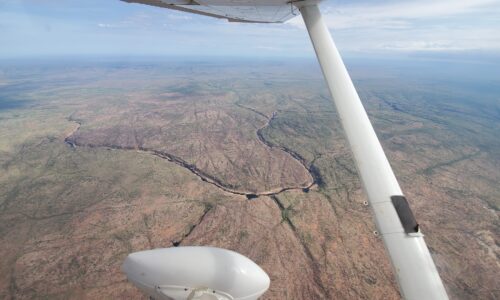
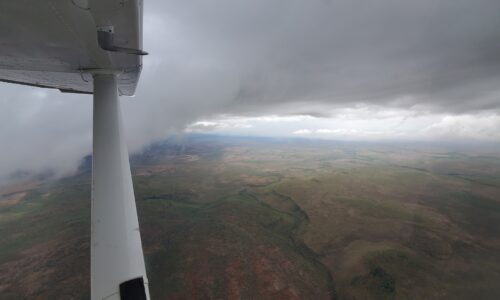
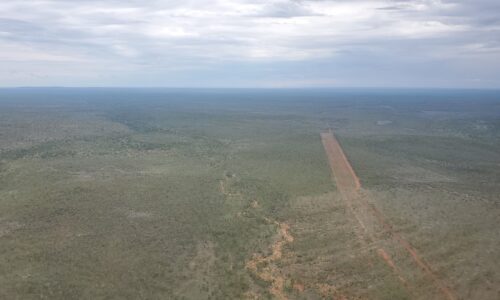
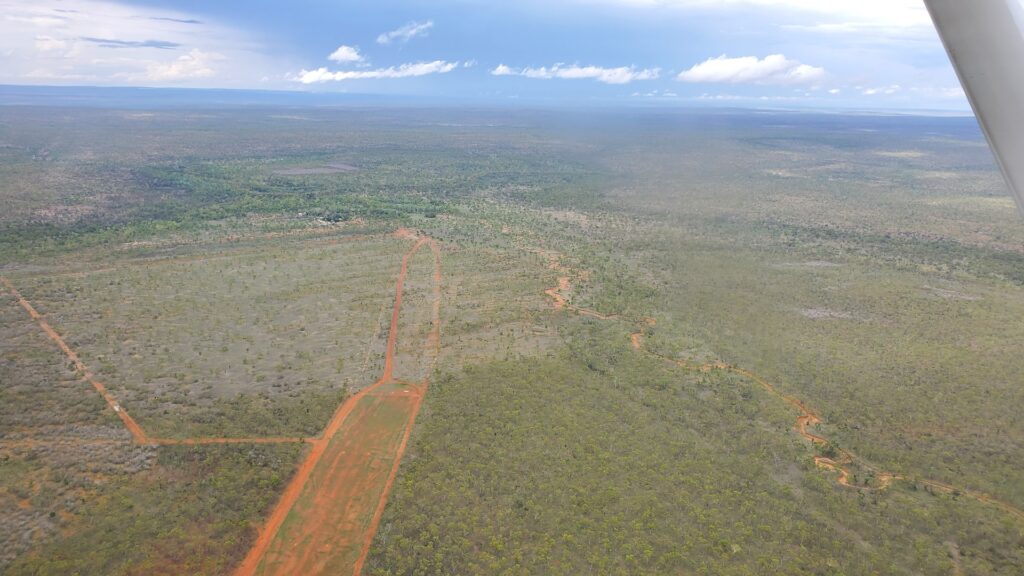


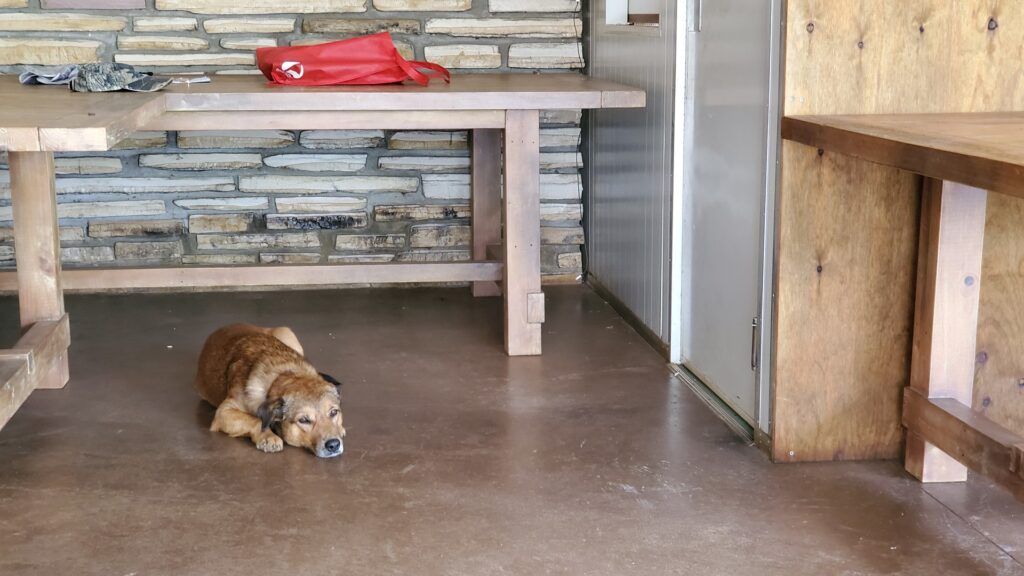
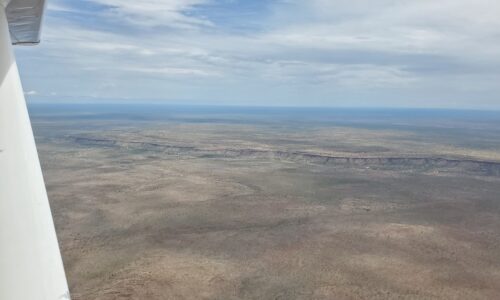
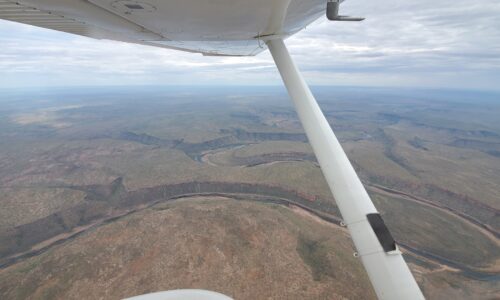

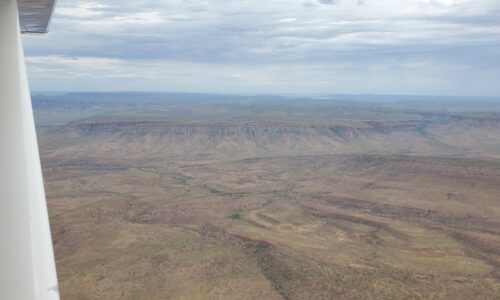
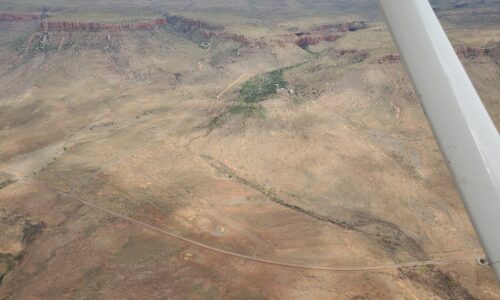
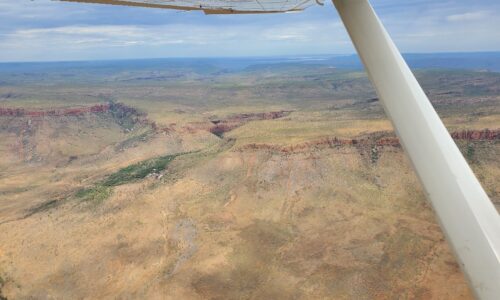
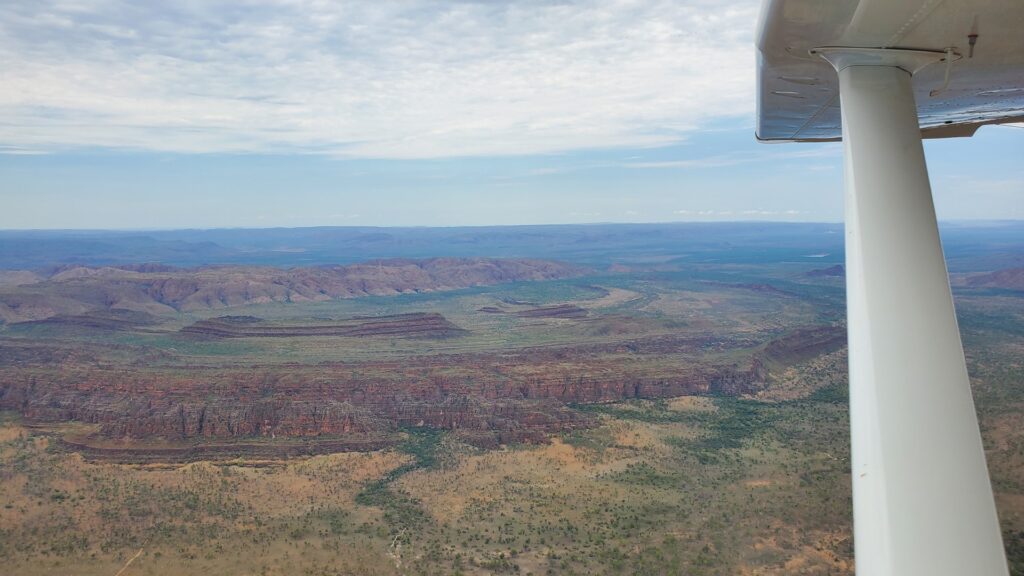
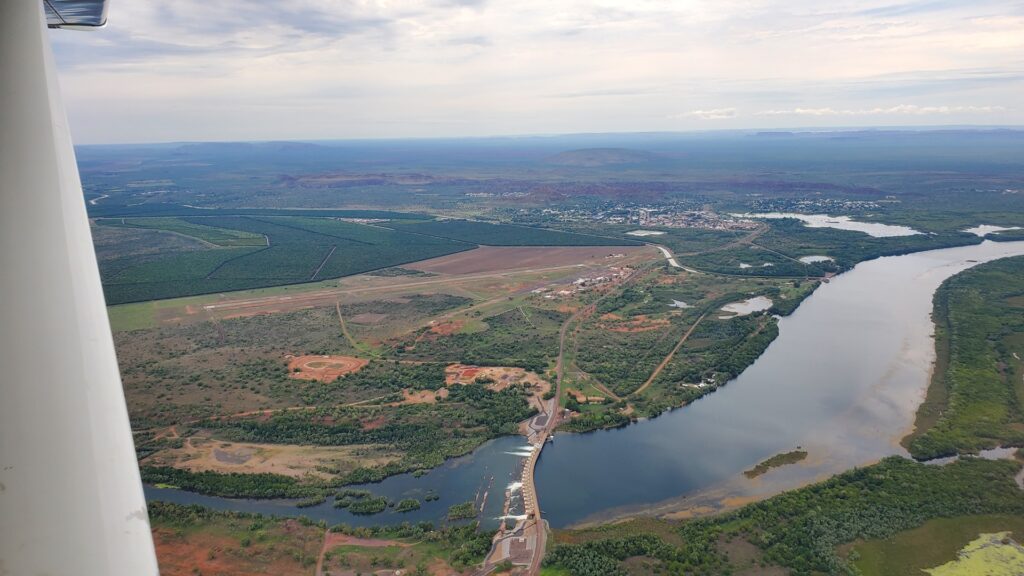





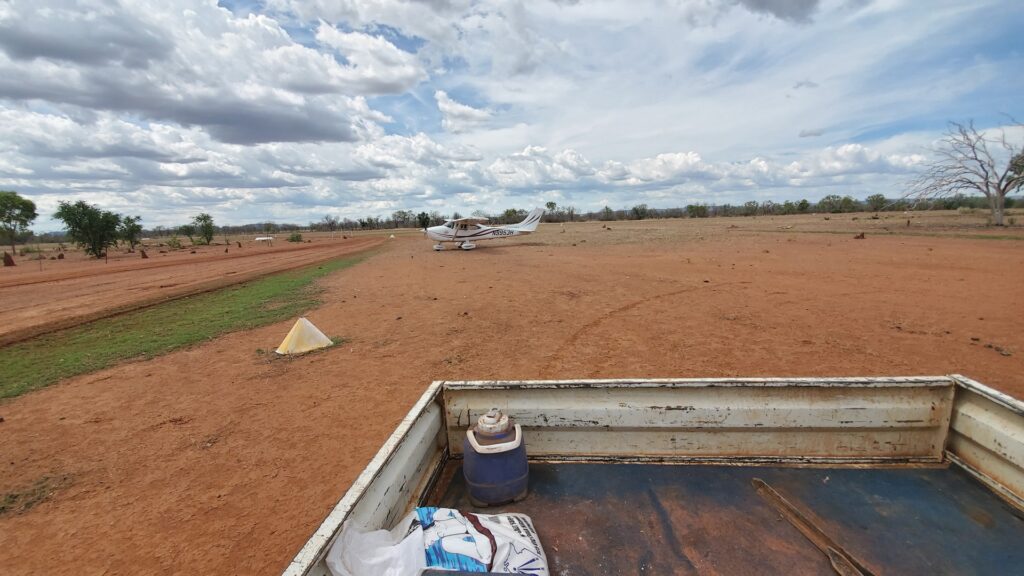

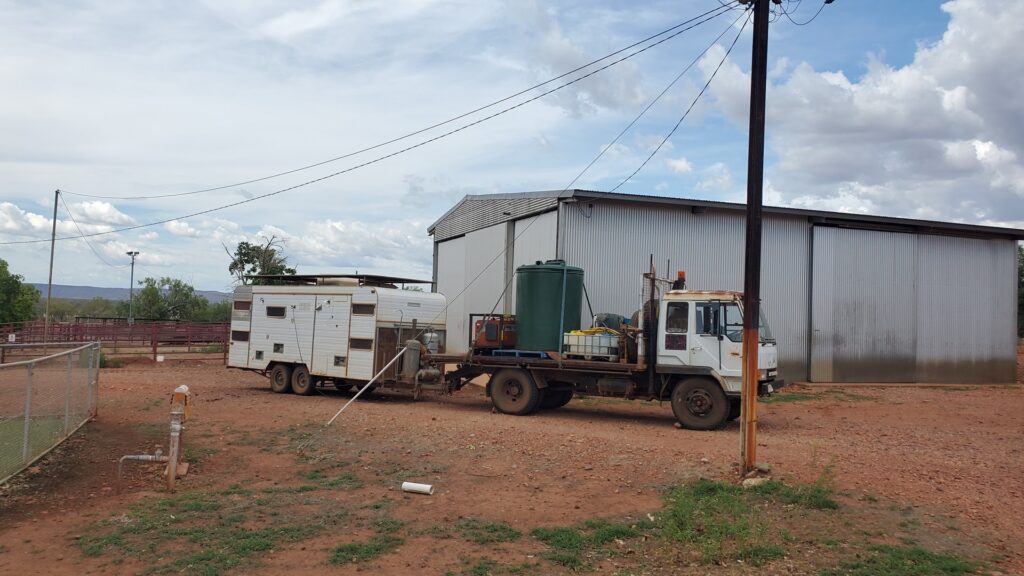
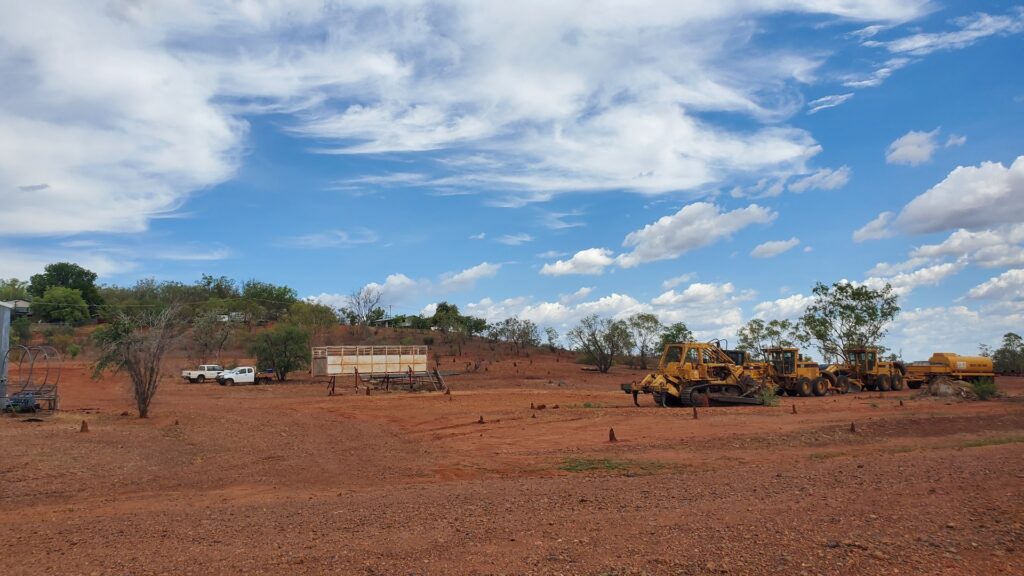


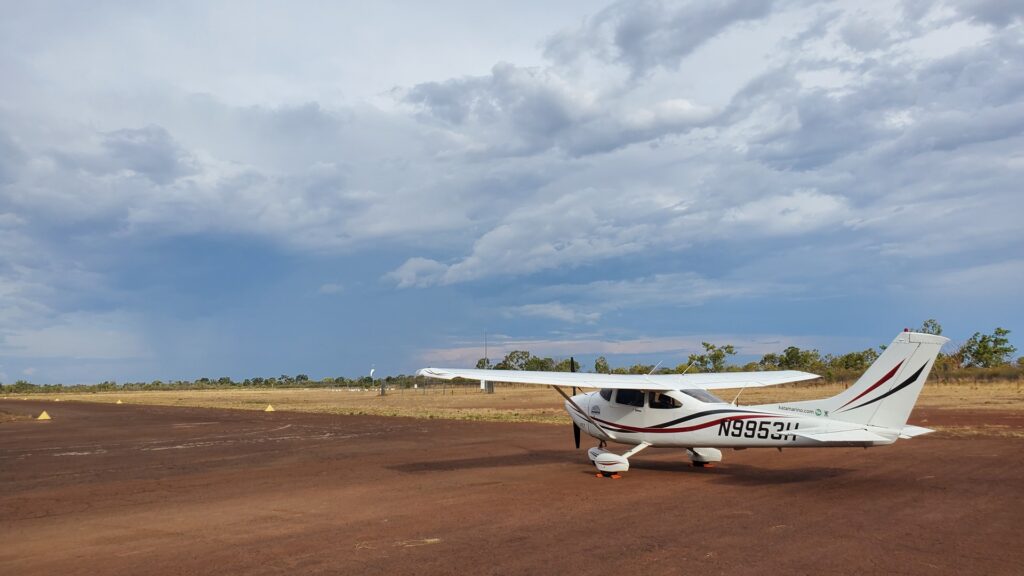
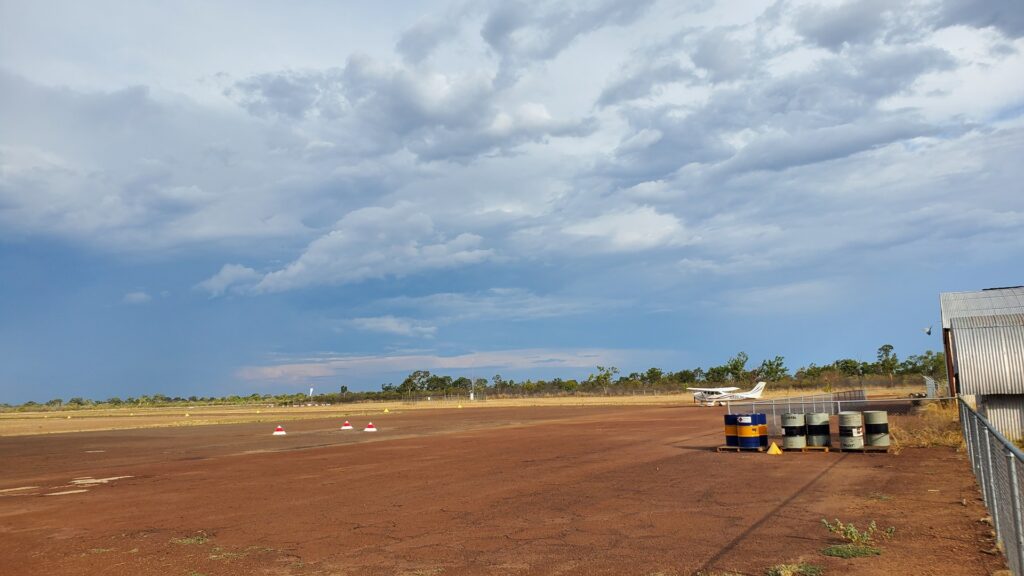
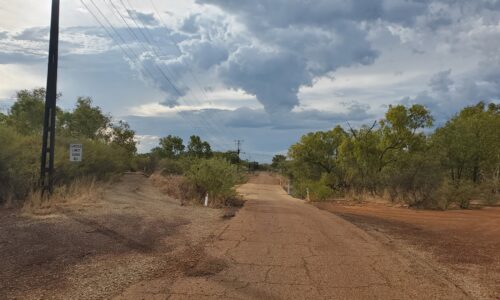

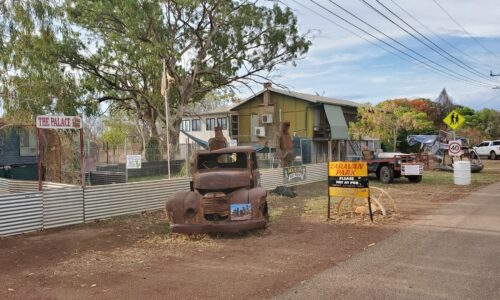
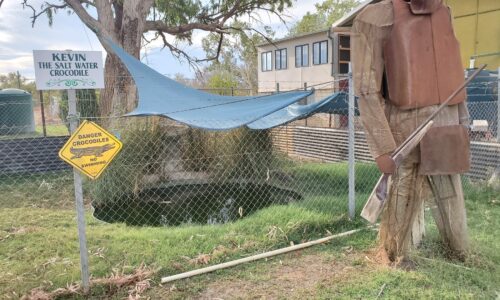

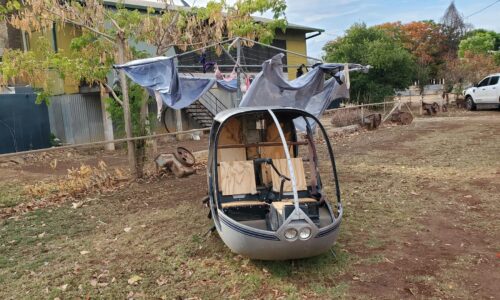
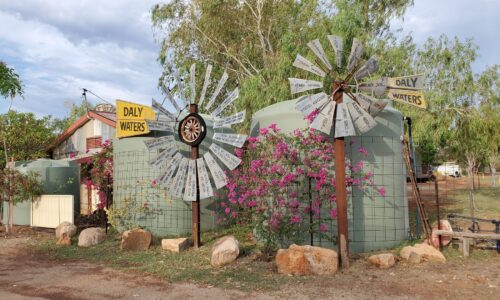
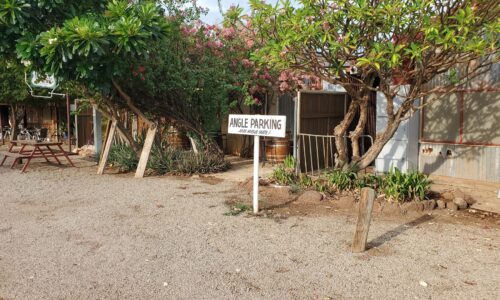


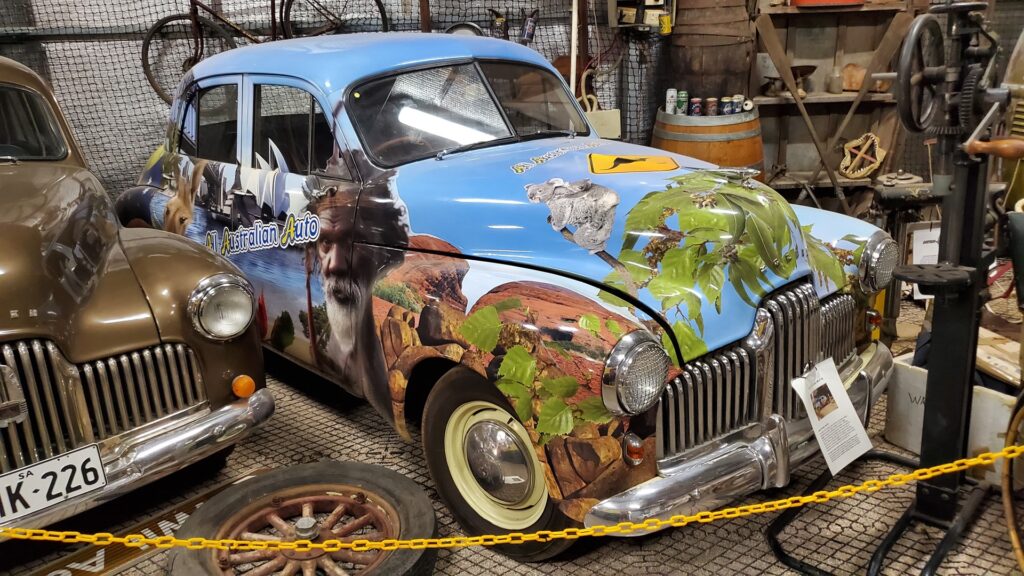
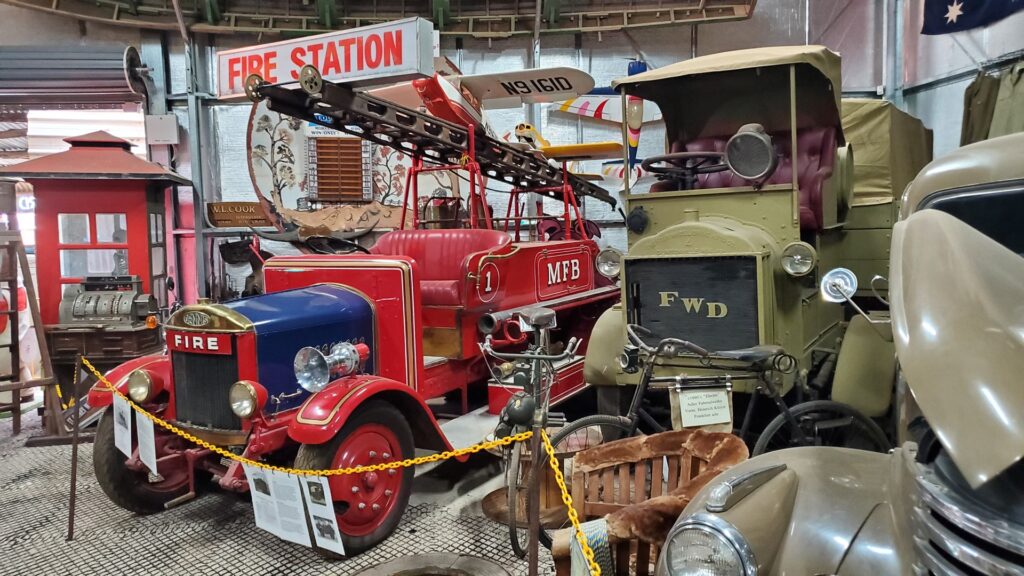
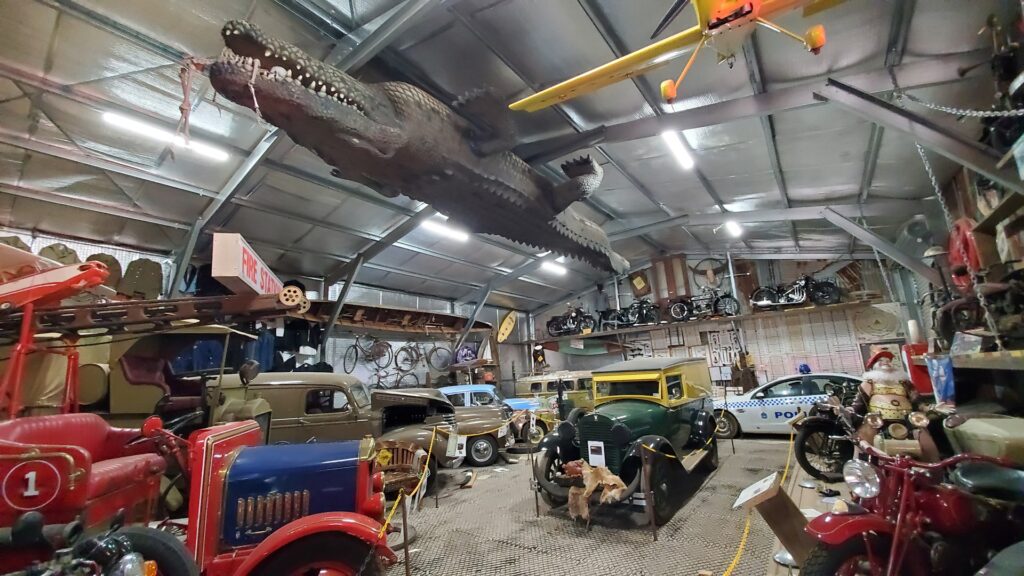










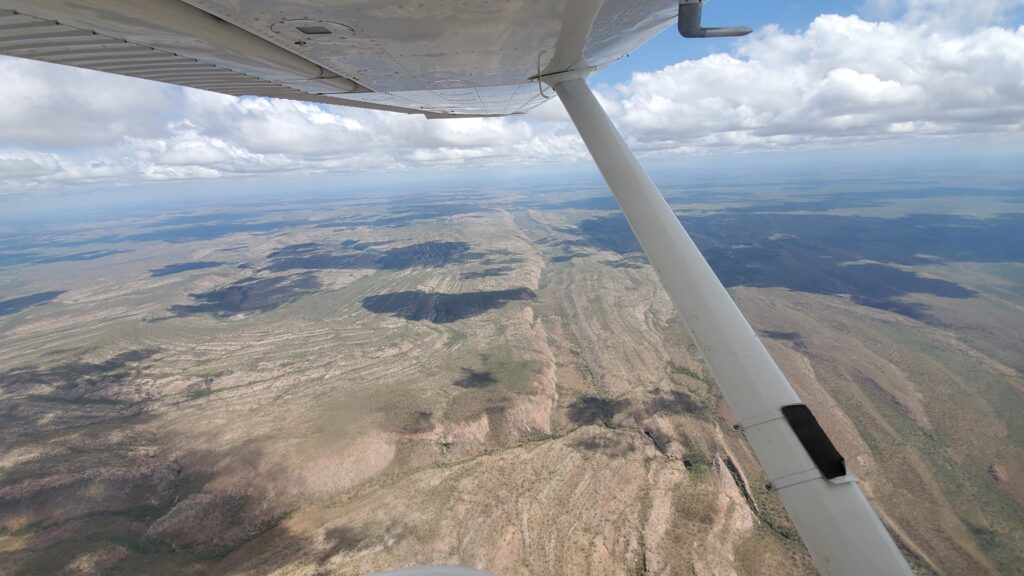
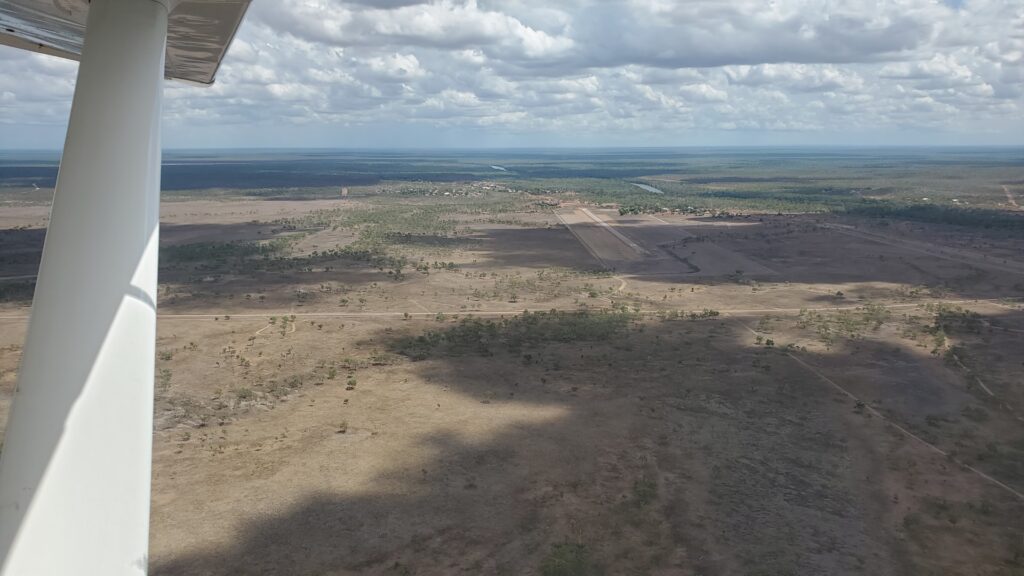










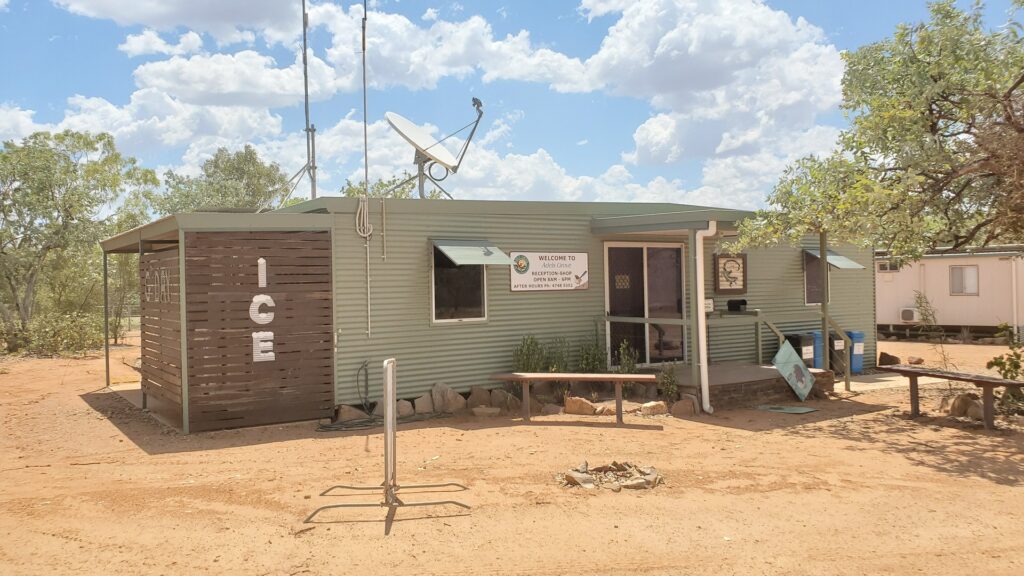
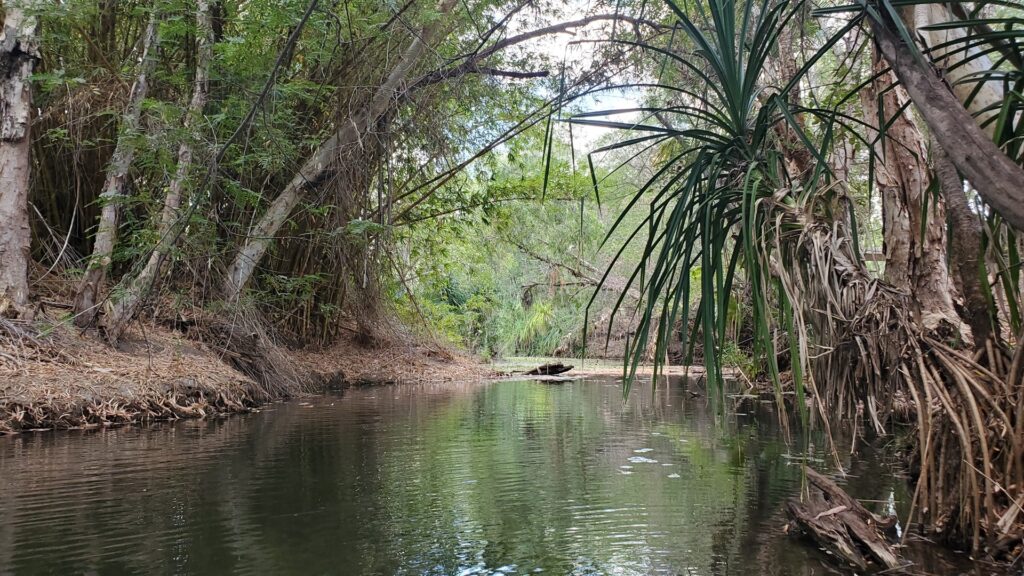














One thought on “Round the World – Australia 2, Part 8”
Hi Ross
We hear about all the lockdowns in Australia so I guess you’re still unable to continue.
Look forward to hearing from you again soon.
Take care,
Phil Pike